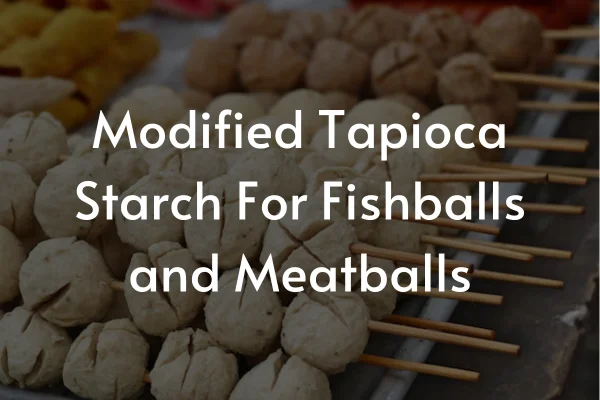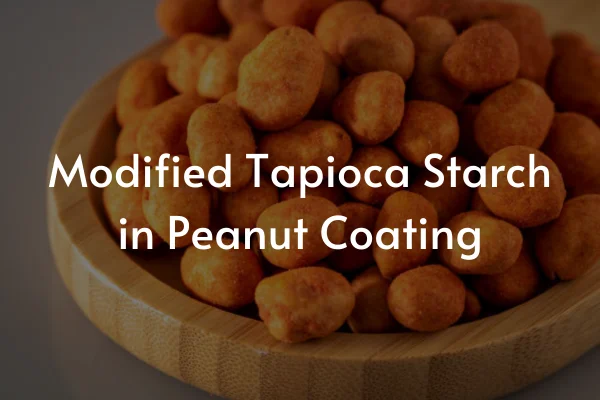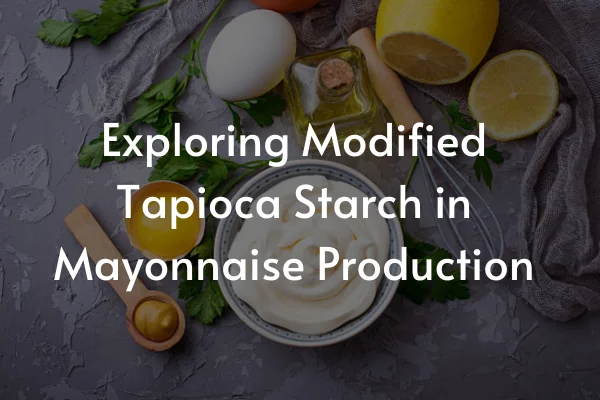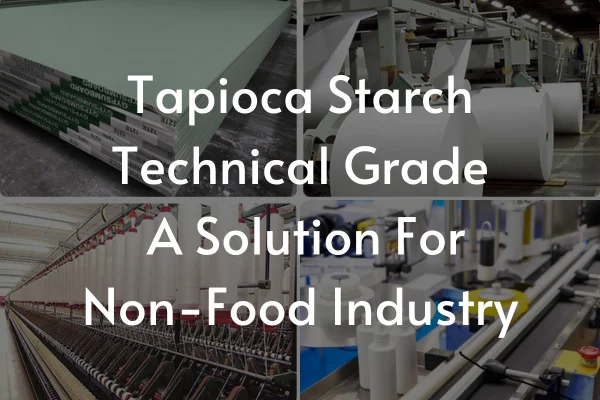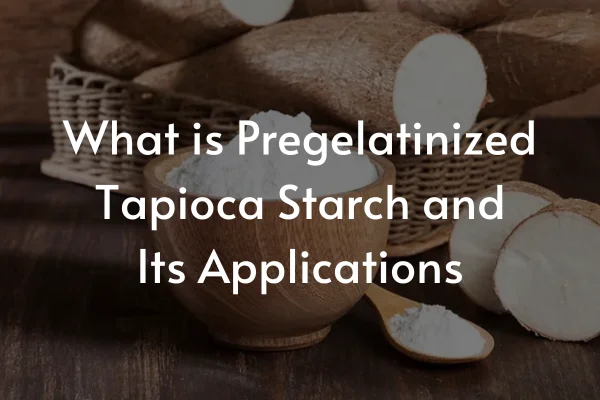
The Differences Between Tapioca Starch And Corn Starch
- Home
- Tapioca Starch Products
- The Differences Between Tapioca Starch And Corn Starch
Tapioca starch vs corn starch have been received concerns from many consumers regarding theirs differences and if they can be used interchangeably. In fact, while often used interchangeably, these starches possess unique characteristics that can significantly impact the outcome of consumers' final products. Join us to explore the differences between tapioca starch and corn starch, from their orgins to applications, and to see why tapioca starch is going to be a more ideal solution.
Definition of Tapioca starch vs Corn starch
Starch
Starch represents a biodegradable natural macromolecule with notable attributes such as affordability, environmental friendliness, and abundant sources. Its versatility extends across various industries including food, textiles, papermaking, and adhesives, where it finds extensive applications.
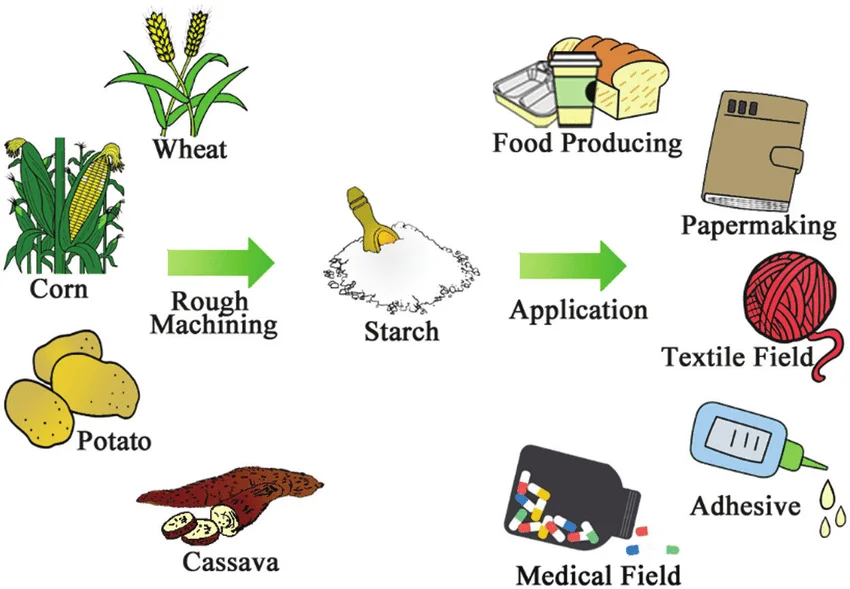
Tapioca starch
Tapioca starch is a fine white starch product extracted 100% from the roots of the cassava plant. Tapioca starch is also known as Cassava Starch.
In food Industry, cassava starch are widely used in different dry products such as rice paper, tapioca flour, vermicelli, rice noodles, noodle soups, banh canh (Vietnamese udon-like soup), sago pearls, fatty flour, instant noodles, alcohol, seasoning powder, and seasoning granules.
In non-food industries, manioc starch is used as a filler or surface coating for certain types of paper and cardboard in paper industry. In addition, construction industry also uses this starch in production gypsum ceiling tiles, it enhances bonding for clay, limestone, and acts as an additive for paint.
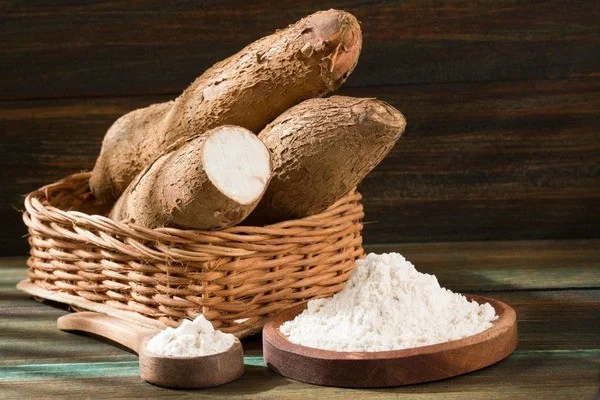
Corn Starch
Corn starch is a very light yellow starch which is extracted 100% from the core of corn - corncob. The process of refining corn starch involves soaking, grinding, separating, filtering, and drying the corncob.
In food industry, corn starch serves various purposes including cooking, seasoning gourmet dishes, brewing beer, enhancing meat products, and acting as additives for dairy products, like cheese, butter,… for salad dressing, and a variety of soft candies.
In non-food industry like paper making, corn starch is commonly utilized as an adhesive due to its structural similarity to paper. This characteristic strengthens natural paper fibers, resulting in increased durability and excellent printing capabilities.
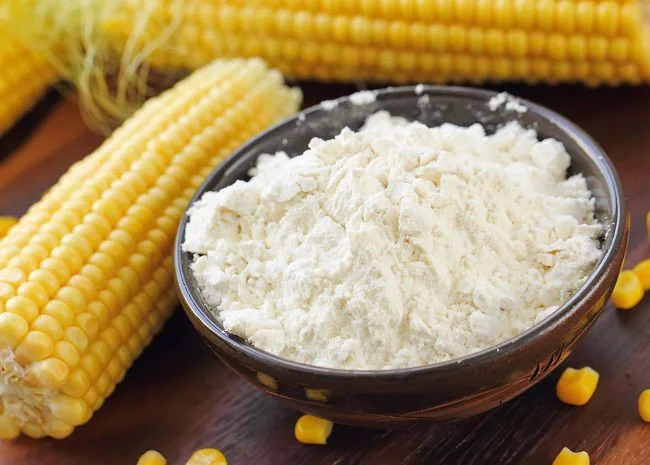
Comparison between Tapioca starch vs Corn Starch
Similarities of Tapioca starch vs Corn Starch
In general, both starches are in powder form, with a mild odor and bland taste. Both can form a gel-like structure (gelatinization when water used), but tapioca starch has a higher gelatinization strength compared to corn starch.
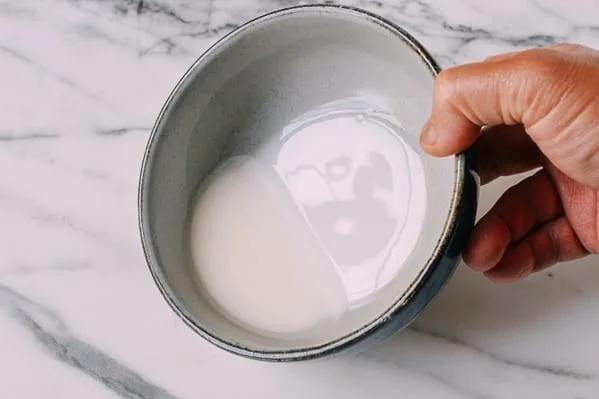
Differences between Tapioca starch vs Corn Starch
| Starch | Tapioca Starch | Corn Starch |
| Origin | 100% fresh cassava roots | 100% Corn core |
| Appearance | Fine white powder | Light yellow powder |
| Characteristics | Tapioca starch is difficult to gelatinize in water at normal or low temperatures. At high temperatures or in an alkaline environment, tapioca starch undergoes gelatinization and forms a highly sticky, viscous, and elastic adhesive substance. It slows down the starch retrogradation. | Corn starch gelatinizes at a higher temperature than tapioca starch. Sauces made from cereal starches such as corn starch appear cloudy, while tapioca starch produces transparent appearance for sauces. Corn starch has higher fat and protein content. |
Why should you choose tapioca starch over corn starch?
Regarding starch characteristics, tapioca starch has a higher ability to create viscosity and adhesion than corn starch. Corn starch does not bind in acidic solutions such as lemon, vinegar, apple juice, or orange juice. Meanwhile, tapioca starch and modified tapioca starches perform well in acidic solutions.
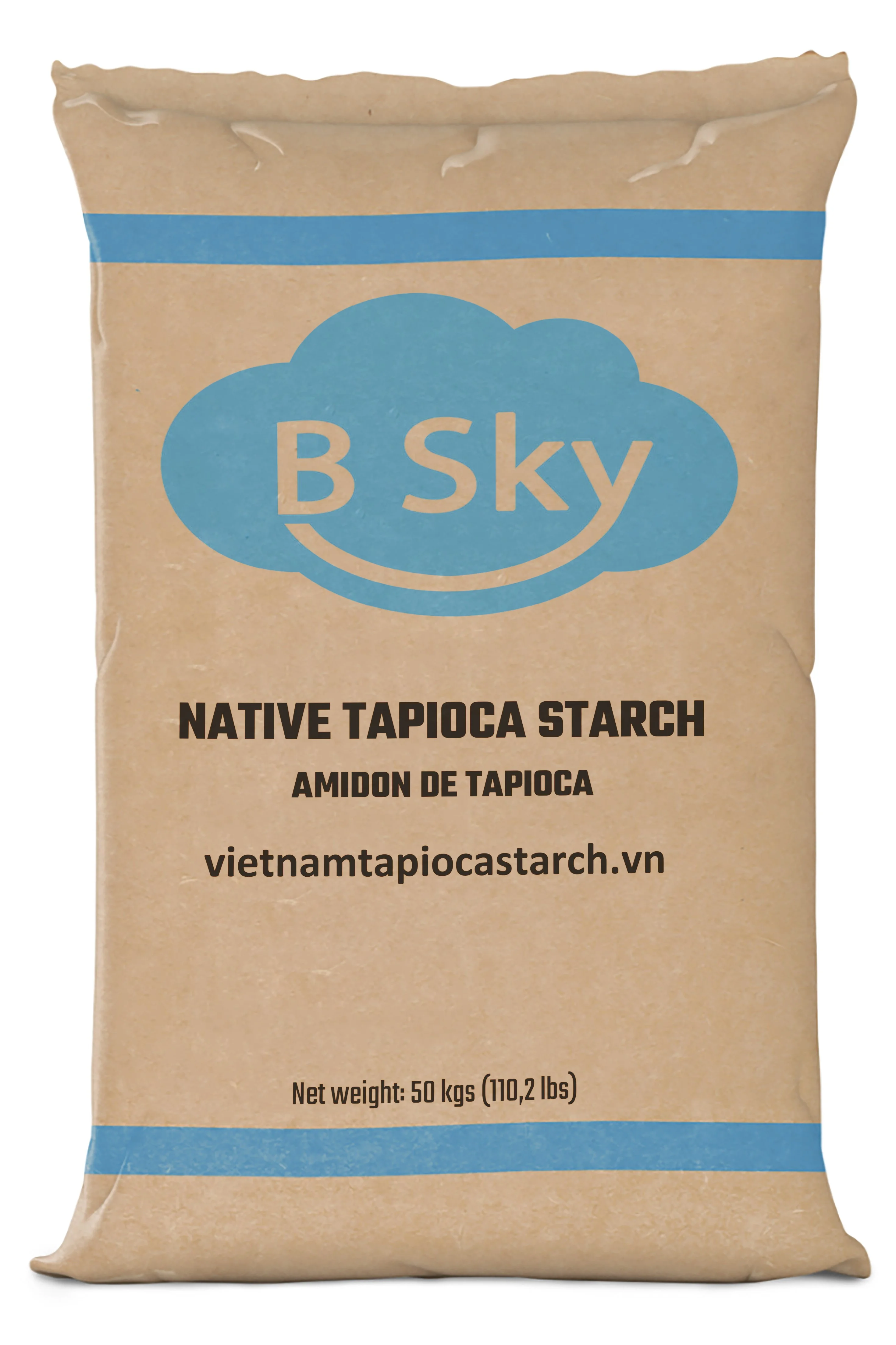
Among the commonly used natural starches with mainly commercial value, tapioca starch surpasses corn starch (in starch content and characteristics) while being much cheaper (with equivalent biological and chemical properties).
With these advantages in both characteritics and cost-effectiveness, there is no doubt why tapioca starch demand increases significantly worldwide.

B Sky - Be Your Tapioca Starch Solutions
If you are looking for Vietnam affordable-quality tapioca starch with:
- Food grade (Low SO2 starch)
- Standards: ISO, SMETA, HACCP, HALAL, KOSHER, FSSC, USFDA
- Diverse customization: 20/25/50kg PP/paper bag, 850kg jumbo bag…
Please feel free to contact us directly at:
- Whatsapp/Wechat: +84 98 352 45 99
- Email: marketing@viegoglobal.com
- Website/Blog: www.vietnamtapiocastarch.vn
Related Articles
Modified Tapioca Starch For Fishballs and Meatballs Production
Modified tapioca starch for Fishballs and Meatballs is an ingredient that many Food manufacturers ...
Modified Tapioca Starch in Peanut Coating Process
Welcome to our comprehensive guide on the role of Modified Tapioca Starch In Peanut Coating . In ...
Exploring Modified Tapioca Starch for Mayonnaise Production
Modified tapioca starch for mayonnaise plays an important role to food manufacturers. With its ...
What is Tapioca Coarse Starch and Its Function
Tapioca coarse starch is one of cassava products widely used in food industry, especially for fried ...
Tapioca Starch Technical Grade: A Solution For Non-Food Industry
Tapioca Starch Technical Grade , also called industrial grade tapioca starch, refers to cassava ...
What is Pregelatinized Tapioca Starch and Its Applications
Pregelatinized Tapioca Starch (cold-swelling tapioca starch) are modified starch types that have ...

